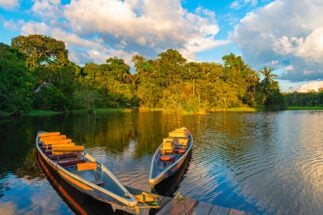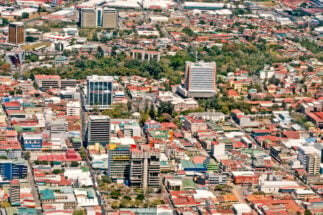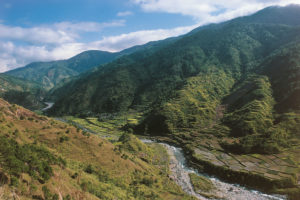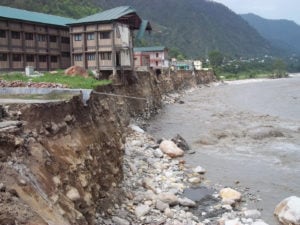The economic crisis resulting from the Covid-19 pandemic has left Latin American countries struggling to make debt repayments to creditors, including China. Faced with this, finance experts and environmentalists are revisiting debt-for-nature swaps – schemes that can make repayments manageable, protect the environment and help countries meet international climate commitments.
Latin America’s GDP dropped 7.7% last year and won’t return to pre-pandemic levels until 2024, according to the UN’s Economic Commission for Latin America and the Caribbean (ECLAC). Countries have been urged to use the crisis as an opportunity to kickstart a green recovery.
7.7%
the drop in Latin America's GDP last year
However, doing so could prove tricky as governments across the region deal with high levels of sovereign debt, from private creditors, multilateral agencies and, in some cases, China. This is especially true for Argentina and Ecuador, which have successfully renegotiated part of their debt but still face significant payments in the coming years.
This is where sustainability-based debt relief schemes can help. They are an incentive-based solution for helping highly indebted countries to achieve conservation targets. Organisations or government creditors negotiate with debtors to cancel or reduce debts in return for binding commitments to protect biodiversity and reduce emissions.
They have a number of advantages. They alleviate the fiscal pressure of debt repayment, helping improve macroeconomic stability. They also generate long-term, stable streams of revenue for environmental projects, as they operate over the lifetime of a sovereign loan.
For creditors, the likelihood that borrower countries will repay any outstanding balance increases, thanks to the enhanced capacity for growth that lower debt enables.
Debt-for-nature swaps are not new tools. In the 1990s, organisations such as the World Wildlife Fund (WWF) purchased part of Bolivia and Ecuador’s debt and in return, the countries undertook to protect threatened species or reduce deforestation. From 1991-2003, almost $1.1 billion was generated for conservation through debt for environment swaps.
Researchers and environmentalists believe now is an opportune time to scale up the schemes.
The case for a debt-for-nature swap with China
Researchers from the Global Development Policy (GDP) Center recently made the case for a debt-for-nature swap specifically with China. As the world’s largest bilateral creditor, China is in a unique position to help developing countries address their economic and sovereign debt crises simultaneously, they argued.
China has actively participated in the World Bank’s Debt Service Suspension Initiative (DSSI) created by G20 countries last year. The initiative allowed 73 lower-income borrower countries to reduce their bilateral debt payments during the COVID-19 crisis. Although it will expire this June, countries can still apply for permanent debt forgiveness.
“A third of the global debt is held by bilateral creditors, of which China is the largest. China has proven to be the most active participant in debt relief schemes in 2020 and now it could build on this leadership by linking debt relief to environmental outcomes,” Kevin Gallagher, co-director of the GDP Center, said in a recent webinar.
The GDP Center’s research assessed which countries would be suitable for debt-for-climate or debt-for-nature swaps with China, based on significant exposure to both Chinese debt and climate and biodiversity risks. Their global outlook identifies countries with the greatest potential.
In Latin America, they highlight Ecuador, which owes an amount equivalent to 17.1% of its GDP to China. It has a moderately high possibility of carrying out a debt-for-climate scheme, the research said. It is the Latin American country to receive the third largest amount of finance from Chinese policy banks, according to the GDP Center and Inter-American Dialogue’s China-Latin America Finance database.
“China has immense potential for sustainability-enhancing debt renegotiations. Specifically, we identified 41 countries with high exposure to Chinese debt. Of those, 15 have the potential for biodiversity finance renegotiation, 25 for climate-finance renegotiation and 11 for both,” said Rebecca Ray, a senior researcher at GDP.
Michael Westphal and Shuang Liu of the World Resources Institute (WRI) wrote in a November 2020 blog post that for China, engaging in further relief through debt-for-nature swaps could boost its credentials as a global “climate champion”. This would complement its domestic actions to achieve carbon neutrality by 2060, they argued.
Still, China won’t likely do this alone and it would expect other multilateral organisations and governments to participate, Liu said. Were this the case, Chinese stakeholders would feel more enthusiastic about offering debt relief through biodiversity conservation and climate change targets, she added.
A proposal for China and Ecuador
Carlos Larrea, a researcher at Universidad Andina Simón Bolívar in Ecuador, recently presented a proposal for Ecuador to engage in a debt-for-nature scheme with China, its largest creditor. This would allow addressing not only the country’s sovereign debt problem but also put it on a more sustainable path towards economic growth.
Ecuador now has US$5.3 billion of outstanding debt to China, some 70% of the country’s total foreign debt, according to Larrea’s calculations. Following a sovereign default in 2008, former president Rafael Correa agreed to a series of oil-backed loans deals with China. Last year, the government agreed to delay payments with Chinese banks and the IMF.
“Ecuador now finds itself with commitments of reduced public external debt but still not economically sustainable. China, as the largest bilateral creditor, faces the possibility that Ecuador will not be able to cover debt service expenses in the coming years,” said Larrea. “We need to find solutions to make the economy sustainable in the long-term.”
For Larrea, Ecuador is an ideal candidate to carry out a nature-for-debt swap because of its high level of debt and its unique biodiversity. He proposes a swap of 6% of the country’s debt with China to protect an area of 200,000 hectares of native forests, mainly in the Amazon basin.
The proposal is feasible and could lead to a more sustainable model for Ecuador. Biodiversity is the most important thing we have for the future
Ecuador tried a similar scheme in the past but it ended in acrimony. In 2007, Correa pledged to leave untapped the vast oil deposits in the Yasuní national park, a biodiversity hotspot, in return for international compensation equivalent to half the reserves’ value. But scarcely international donors stepped-up and a blame game for the initiative’s failure ensued.
“The world has failed us,” Correa said on decreeing the end of the initiative in 2013. He said that Ecuador was not seeking charity but “shared responsibility in the fight against climate change.” Local and international NGO’s accused Correa of indulging donors but failing to attract and coordinate funds, and secretly planning to extract the oil all along. Drilling began in 2016.
The new proposal includes the establishment of a deforestation monitoring system and punishments for those detected clearing forests. All extractive activities in the area would be reduced and local communities would receive economic incentives to prevent deforestation. A trust fund would also be created to encourage local sustainable projects such as bioeconomy.
This would benefit both China and Ecuador, Larrea argued. By backing this proposal, China would position itself as a global climate and biodiversity leader as it hosts a major global biodiversity summit later this year that seeks to outline new targets for conservation. For Ecuador, it would ease its dependency on oil exports.
Larrea has spoken with Ecuador’s main presidential candidates about his proposals and is optimistic about them. Not doing so could trigger severe consequences for Ecuador in the medium-term, he argues, as oil is running out and there’s no plan to replace it as a major source of income.
“Most of the oil that will be extracted in the next two years in Ecuador is already committed to paying part of the debt with China. It’s a destabilising mechanism,” Larrea said. “The proposal is feasible and could lead to a more sustainable model for Ecuador. Biodiversity is the most important thing we have for the future.”









